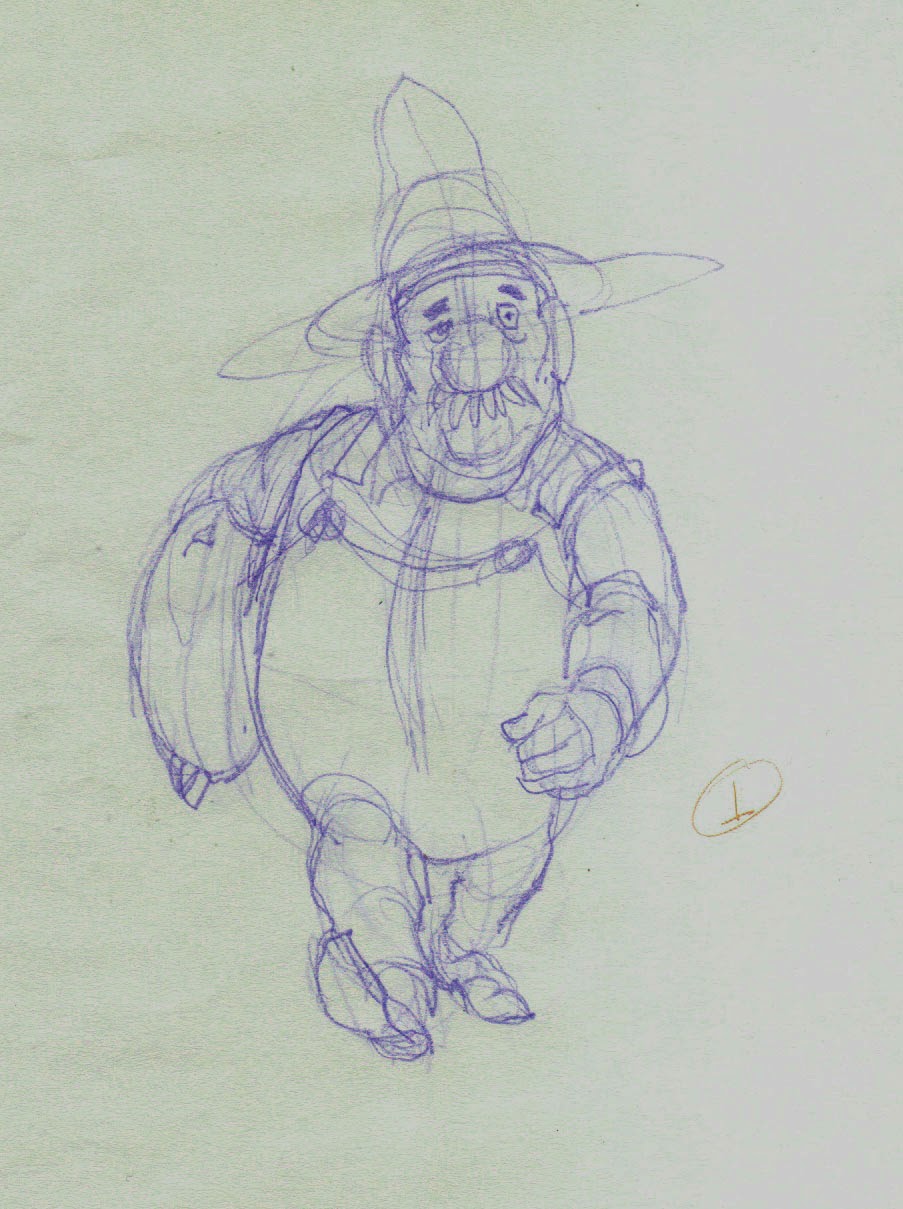In the world of hand-drawn animation, when the animation is done and approved it comes time to prepare the drawings for final rendering. During the animation, where one is concerned mostly with timing and posing, the accurate rendering of the characters may be allowed to slip. So long as the rough drawings depict the characters in reasonably accurate proportion, nothing about the cleanup process should intertere with the decisions made during animation. (And if you do find yourself making changes to the animation at this stage, you should probably stop and admit to yourself that the drawings are not ready for cleanup!)
In animation involving a staff of several artists who work on the production drawings, the need for model control is all important, because no two people naturally draw alike. Studios have always worked hard at making all the images of any character look uniform, which means they are involved in suppressing the individual quirks of all the artists to the point that the viewer will not be able to detect the work of one artist from any other. Even so, animators and animation historians can often spot the work of a Jim Tyer, a Milt Kahl or a Rod Scribner by their signature traits of drawing and movement.
Independent animators who work alone or almost alone have a simpler time of it. They draw like they draw, they draw or supervise every frame of their films, and they alone determine how closely or how loosely they must adhere to their own model sheets.
In my case, interested as I am in drawing, I do take some pains to keep the characters on model throughout the whole creative process. Yet there is still some work to be done to get them back on model.
Here is a model sheet for Victoria, the woman character in my project,
The Crossing.
 |
| Victoria model sheet. |
Now take a look at this cleanup, on the right, as compared with the rough drawing to the left.
 |
| Victoria cleanup 1. |
If you look closely you will be able to tell that this cleanup is not a re-tracing but a cleanup done on the same sheet of animation paper as the rough. I simply lightened all the pencil lines with either a kneaded eraser or a white plastic eraser, then drew in the lines again with close reference to the character model sheet. Most of the changes are in the face, where I made the jaw smaller and changed how the eyes relate to the nose.
Here is a second example, done the same day:
 |
| Victoria cleanup 2. |
And in this one it appears at first glance--even to me--that I drastically altered the tilt of her head. But in fact what I did was to correct some skewed elements in the rough, most important being the part in her hair, which was skewed too far to the left (her right.) Also I made her face a little narrower, and I made the hands and wrists more delicate.
A third example:
 |
| Victoria cleanup 3. |
This one shows the biggest changes of all. I decided that the angle suggested by the eyes and back of the head required me to force all of the features much closer to a full profile, and all of the facial features needed to be made more delicate. The final hands have also become smaller and thinner.
Cleanups like this need to be created in the same order as the animation drawings of a pose-to-pose scene: first the extremes, then the breakdowns, then the inbetweens. As you draw, you should be stacking your drawings on the pegs of your board exactly as you did when making the roughs, so that the drawing you are correcting is beiing constantly compared to the already-cleaned-up drawings that bracket it on either side. This may sound laborious but can actually be done quickly--much more quickly than the creation of your roughs. And if your extremes and breakdowns are good, then your inbetweens ought to be good also.
I hope this provides some insight and encouragement for any of you with a stack of rough animation drawings that you have been reluctant to clean up. Now get out your eraser, your sharpened pencils and your model sheets, and just do it!
Next: The Oldest Animation Book



















